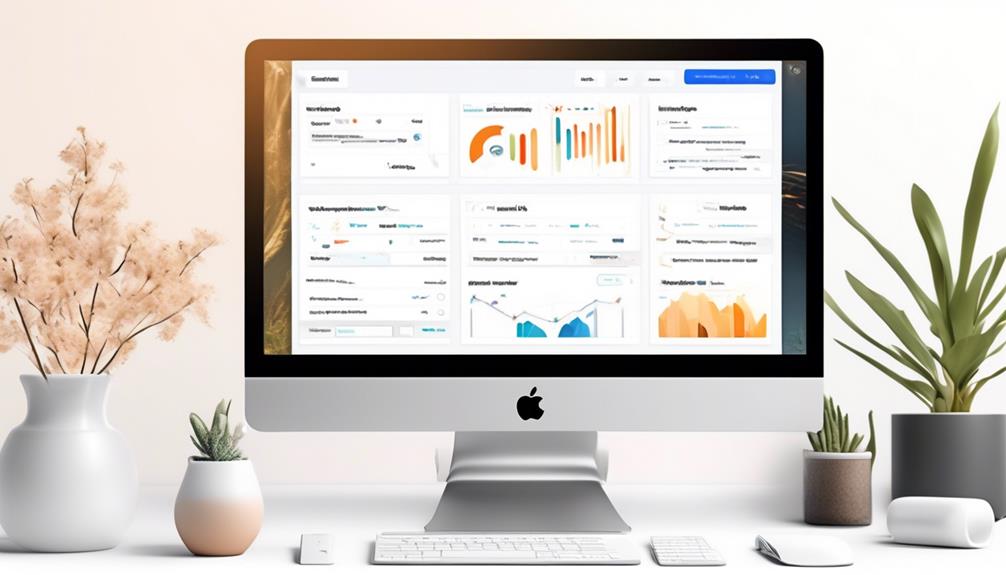When establishing a successful email warm-up schedule, attention to detail and determination are essential. Developing a consistent pattern for sending emails can greatly impact your overall email deliverability strategy.
But how to strike the right balance between warming up your IP address and maintaining recipient engagement? We've found that a well-structured warm-up schedule lays the groundwork for building trust with Internet Service Providers (ISPs) and enhancing your email reputation.
But how exactly does one go about creating an effective plan for email warm-up that ensures a smooth transition into regular sending?
Key Takeaways
- Gradually increasing email volume over a specified warm-up period is crucial for optimal email deliverability and building a strong sending reputation.
- Constant monitoring of recipient engagement metrics is essential to build trust with ISPs and bypass spam filters.
- Utilizing specialized warm-up tools and collaborating with an ESP can help establish a positive sending reputation and improve email deliverability.
- Testing for spam filters and regularly checking and addressing any issues promptly is necessary to maintain a good sender reputation and achieve optimal inbox placement.
Importance of Email Warm-up
To ensure optimal email deliverability and establish a strong sending reputation, it's imperative to fully understand the importance of email warm-up and its impact on inbox placement.
The email warm-up schedule plays a critical role in shaping the IP reputation and overall deliverability. By gradually increasing the volume of sent emails and monitoring recipient engagement metrics during this process, senders can demonstrate to Internet Service Providers (ISPs) that their emails are legitimate and desired by recipients.
This gradual approach helps build trust with ISPs, as they view senders who warm up their IPs properly as responsible and legitimate sources of email traffic. Moreover, engaging in a thorough warm-up process helps in bypassing spam filters and ensures that emails land in the recipients' inboxes rather than getting lost in the dreaded spam folder.
Understanding the importance of email warm-up isn't only about following best practices but also about acknowledging its direct impact on the success of email campaigns. Neglecting the warm-up process can lead to poor inbox placement, low engagement rates, and ultimately damage a sender's reputation.
Therefore, prioritizing the email warm-up process is fundamental for achieving high deliverability rates and maximizing the effectiveness of email marketing efforts.
Understanding IP Warm-up
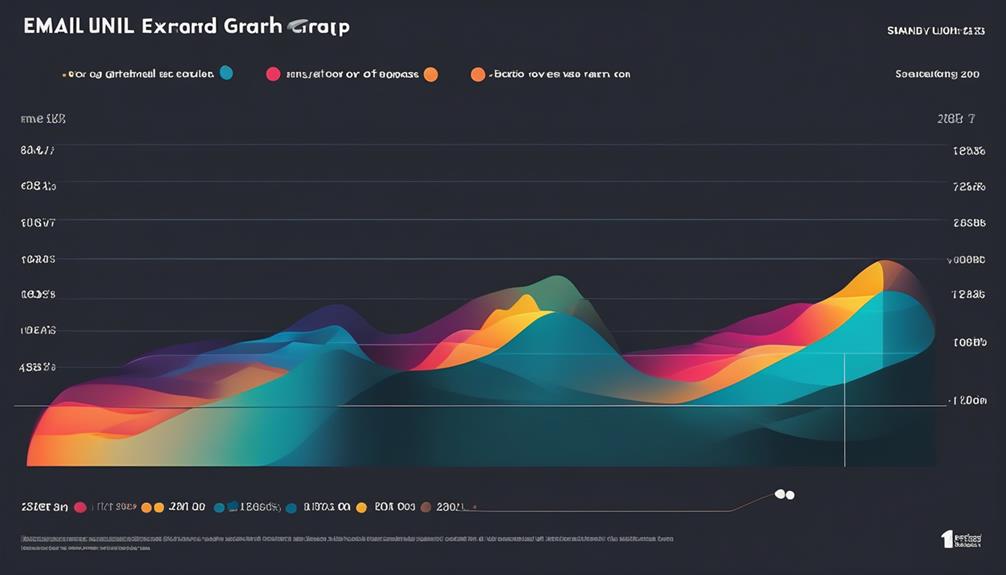
Understanding IP warm-up is essential for email senders looking to establish a positive reputation and optimize deliverability. This directly builds upon the importance of email warm-up and its impact on inbox placement. When delving into IP warm-up, it's crucial to comprehend the intricacies involved in the process. Here's what you need to know:
- Gradual Increase in Sending: IP warm-up involves gradually increasing the volume of emails sent from a particular IP address. This gradual increase helps in gaining the trust of Internet Service Providers (ISPs) and establishing a positive sending reputation.
- Duration and Schedule: The warm-up schedule typically spans up to 60 days, although some senders may complete it within 30 days. Adhering to a well-planned warm-up schedule is essential for successfully building a positive reputation and optimizing deliverability.
- Importance of Recipient Engagement: During the warm-up process, recipient engagement plays a pivotal role. High levels of engagement from the audience can positively impact the warm-up process and mitigate any potential negative effects on the sender's reputation.
Understanding these aspects of IP warm-up is crucial for email senders to navigate the complexities of establishing a positive sending reputation and optimizing deliverability.
Creating an Effective Plan
Creating an effective plan for IP warm-up involves meticulous attention to the volume and frequency of email sends, with a focus on recipient engagement to ensure a positive sending reputation is established.
It's crucial to gradually increase the volume of sent emails over the warmup period, starting with internal addresses and gradually incorporating more external recipients. This gradual increase allows for monitoring recipient engagement rates and adjusting the warmup schedule accordingly.
By closely monitoring engagement rates, we can ensure that the warmup process doesn't negatively impact sender reputation and email deliverability.
Additionally, paying attention to recipient engagement during warmup is essential to avoid any negative impact on the email reputation. It's important to note that ISPs are more lenient with warmup if the audience is highly engaged. Therefore, the warmup plan should be designed to encourage recipient interaction and minimize the risk of being flagged as spam.
Sample Newsletter Schedule
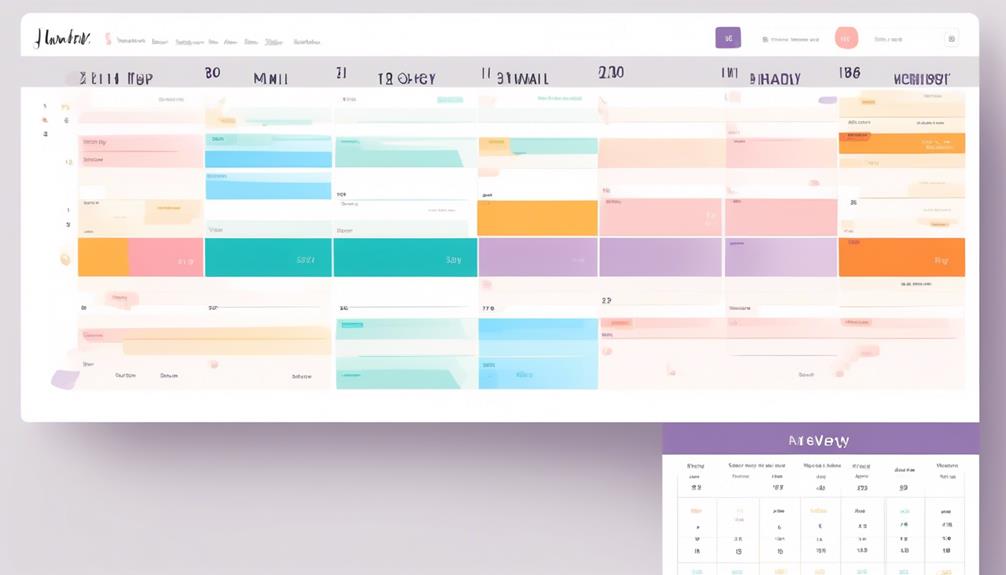
Moving from the meticulous planning of IP warm-up, the sample newsletter schedule provides a structured approach to gradually increasing email volume while prioritizing recipient engagement for optimal deliverability. This schedule is vital in ensuring a successful warm-up for your IP and establishing a positive reputation for your sender domain.
Here are three key components of a sample newsletter schedule:
- Gradual Volume Increase: The schedule recommends starting with a small volume of emails and gradually ramping up the sending volumes each day. This gradual increase allows for monitoring recipient engagement and maintaining a positive sender reputation.
- Focus on Recipient Engagement: The schedule emphasizes the importance of recipient engagement by suggesting a focus on internal addresses initially, followed by more engaged recipients and recently engaged users. This approach helps in gauging the responsiveness of different recipient segments.
- Monitoring and Optimization: The schedule includes provisions for monitoring user engagement and optimizing the sending strategy based on the observed engagement metrics. By continuously monitoring and optimizing, senders can ensure that their emails are well-received, leading to improved deliverability and sender reputation.
The sample newsletter schedule serves as a strategic guide for gradually increasing sending volumes while prioritizing recipient engagement, ultimately contributing to the overall success of the IP warm-up process.
Sample Transactional Email Schedule
To establish a successful warm-up schedule for transactional emails, it is essential to carefully plan and implement a gradual increase in sending volumes while prioritizing recipient engagement. Transactional emails play a crucial role in IP warmup, as they are expected by recipients and typically receive high engagement. Below is a sample transactional email warm-up schedule that outlines the gradual increase in sending volumes over a 15-day period, along with recommended actions to ensure successful warm-up.
| Day | Volume | Recommended Action |
|---|---|---|
| 1 | 100 | Send welcome messages and order confirmations |
| 2 | 200 | Monitor engagement metrics and address any deliverability issues |
| 3 | 400 | Ensure emails are not being marked as spam and focus on recipient engagement |
| 4 | 800 | Gradually increase sending volume while maintaining high engagement |
| 5 | 1600 | Continue monitoring engagement metrics and adjusting sending volumes |
Following this sample schedule, the sending volume gradually increases each day while maintaining a focus on recipient engagement and monitoring deliverability metrics. This approach helps in warming up the IP address and establishing a positive sender reputation with Internet Service Providers (ISPs).
IP Allocation and Warm-up Schedule

When allocating IPs for email sending, it's crucial to follow a warm-up schedule to gradually build reputation and trust with ISPs.
This process involves carefully increasing email volume over a period of time to avoid triggering spam filters and maintain deliverability.
Monitoring recipient engagement is also important during the warm-up period to ensure a successful IP allocation strategy.
IP Allocation
Upon acquiring a new IP address, it's imperative to carefully plan and execute the warm-up schedule to establish a positive email sending reputation and optimize deliverability. IP allocation involves considering the allocation of a new dedicated IP address and its impact on email sending.
Here are three critical factors to consider during IP warming:
- Gradual Increase in Email Volume: Gradually ramp up the volume of emails sent from the new IP address over a specified warmup period to build trust with Internet Service Providers (ISPs) and avoid being flagged as spam.
- Monitoring Recipient Engagement: Constantly monitor recipient engagement metrics during the warmup process to ensure that the emails are well-received and positively interacted with by the recipients.
- Utilizing Warmup Tools: Leveraging specialized warmup tools, such as OneSignal's warmup tool, can aid in the successful warming of the new IP address and establishing a positive sending reputation.
Warm-up Schedule
After carefully considering the factors of IP allocation, we now turn our focus to the meticulous planning and execution of the warm-up schedule for the new IP address to ensure optimal email sending reputation and deliverability. The warm-up process is crucial for establishing domain reputation and maximizing email performance. It involves gradually increasing sending activity to gain ISP trust and should prioritize recipient engagement to avoid negative impacts on reputation. Below is a suggested warm-up schedule that can be adjusted based on specific email volume and engagement metrics:
| Week | Daily Email Volume |
|---|---|
| Week 1 | 100 |
| Week 2 | 500 |
| Week 3 | 1,000 |
Twilio SendGrid can provide assistance and feedback on IP warm-up efforts, ensuring best practices are followed for establishing a positive sender reputation.
Top Tips for Warm-up
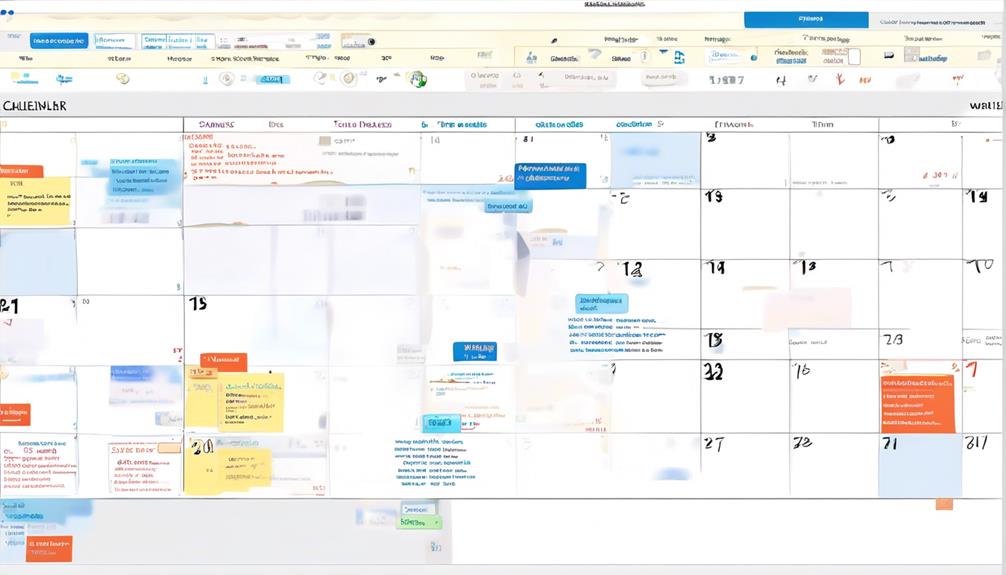
As we consider the top tips for email warm-up, it's crucial to focus on effective techniques that contribute to a successful warm-up process.
We'll analyze the importance of warm-up and how it impacts the reputation of our sending IP.
Monitoring engagement metrics, utilizing welcome messages, and employing automation tools are key components to ensuring a smooth warm-up and establishing a positive sending reputation.
Effective Warm-up Techniques
Gradually increasing email volume during the warm-up process is crucial for establishing a positive reputation and gaining ISP trust. To execute effective warm-up techniques, consider the following:
- Recipient Engagement: Pay close attention to user engagement metrics to gauge recipient interest. Adjust email send volumes based on engagement levels to prevent negative impacts on your sending reputation.
- Start Small, Increase Gradually: Initiate the warm-up process with a small volume of emails and incrementally increase the volume each day, following the warm-up schedule. This gradual approach helps in building a positive sending reputation.
- Transactional Emails: Utilize transactional emails, such as purchase receipts and account notifications, for warm-up. These types of emails tend to have higher engagement rates, which can positively influence ISP trust and minimize spam reports.
Importance of Warm-up
Properly warming up a new IP address is a critical step in establishing a positive sending reputation and enhancing email deliverability. During the warmup period, it's essential to monitor sending behavior, recipient engagement, and reputation score closely.
Engaging in a gradual domain distribution helps in building a trustworthy sending reputation. The importance of warm-up lies in its direct impact on the ultimate email delivery success. Following a structured warmup schedule is crucial for gaining the trust of Internet Service Providers (ISPs) and ensuring that emails reach recipients' inboxes.
It's noteworthy that ISPs are more forgiving during the warmup period if the audience is highly engaged. Ultimately, a well-executed warmup sets the foundation for successful email delivery and positively influences sender reputation.
Implementing Warm-up Best Practices

For successful implementation of warm-up best practices, it's essential to establish a strategic plan that aligns with the specific sending volume and engagement goals. When implementing warm-up best practices, several key factors should be considered:
- Email Volume and Sending IP Address: Carefully evaluate the email volume to be sent and consider whether to use a shared or dedicated IP address based on the volume. Low volume senders can opt for shared IPs and skip the warm-up process, while high volume senders should consider using dedicated IPs to separate marketing and transactional emails.
- Engagement Monitoring: It's crucial to monitor recipient engagement during the warm-up process. Keeping a close eye on open rates, click-through rates, and spam complaints can help in adjusting the warm-up schedule and ensuring successful email delivery.
- Collaboration with Email Service Provider (ESP): Working closely with the ESP to develop a warm-up schedule that aligns with the email volume and engagement goals is essential. The ESP can provide valuable insights and support in designing a warm-up plan tailored to specific needs.
Implementing these best practices will contribute to a smooth and effective warm-up process, ensuring a positive sending reputation and improved email deliverability.
Dos and Don'ts of IP Warm-up

When transitioning to the discussion of the 'Dos and Don'ts of IP Warm-up', it's crucial to consider the pivot from implementing warm-up best practices and emphasize the importance of starting with low volumes of high engagement emails to establish a positive sending reputation. Warming up a new domain or IP requires a strategic approach to the volume of emails sent.
It's important to follow the dos and don'ts to avoid deliverability issues. Dos include starting with low volumes of high engagement emails, using transactional emails for warm-up, monitoring engagement metrics, and following best practices of email writing.
On the other hand, don't immediately send high volumes of emails from a new IP address, or neglect monitoring engagement metrics and reputation. Additionally, avoid sending low quality or irrelevant emails during warmup and skip proper email authentication setup.
It's crucial to keep a close eye on reputation and check blacklists regularly to address any issues promptly. Adhering to these dos and don'ts is essential for a proper warm-up and to maintain a positive sending reputation.
Monitoring Warm-up Progress
How can recipient engagement be effectively monitored during the warm-up process to mitigate negative impacts on sender reputation?
Monitoring warm-up progress is crucial to maintaining a good reputation when transitioning to a new IP address. Here's how to effectively monitor recipient engagement during the warm-up process:
- Tracking Send Volume: Keep a close eye on the number of emails being sent each day and adjust the volume based on recipient engagement metrics. Gradually increasing the send volume while observing engagement patterns is essential for a proper warm-up.
- Analyzing Engagement Metrics: Regularly monitor open rates, click-through rates, and other engagement metrics to gauge the effectiveness of the warm-up process. This analysis helps in determining whether the audience is responding positively to the emails and allows for adjustments to be made accordingly.
- Leveraging Monitoring Tools: Utilize email service providers like Twilio SendGrid to assist in monitoring and evaluating the effectiveness of IP warm-up efforts. These tools provide insights into recipient engagement and help in making informed decisions regarding the warm-up schedule.
Testing for Spam Filters

During the warm-up of a new domain or IP, testing for spam filters is a critical step to ensure optimal deliverability and inbox placement for emails. By gradually increasing the volume of emails sent, we can maintain good deliverability and minimize the risk of triggering spam filters.
Large batches of emails can be split into sublists, allowing for consistent, smaller daily send volumes that align with typical sending patterns.
Tools such as Litmus Spam Testing can be invaluable for identifying any blocklists or spam filters that may be affecting deliverability. Addressing any spam-related issues before sending emails can significantly improve inbox placement and overall deliverability.
It's essential to closely monitor the interaction between our emails and Internet Service Providers (ISPs) during the warm-up process, as this can directly impact the reputation of our domain and email addresses.
Timeframe for Warm-up

The timeframe for the warm-up process typically ranges from 30 to 60 days, allowing for a gradual increase in email volume each day to establish a positive sender reputation. This gradual warming helps to signal to Internet Service Providers (ISPs) that the sender is legitimate and can be trusted to deliver relevant and wanted content to recipients' inboxes.
- Start Sending Emails: The warm-up process begins with sending a very small number of emails, typically 50-500 emails per day, depending on the size of the sender's list.
- Gradually Increasing Volume: Over the course of the warm-up period, the sender gradually increases the volume of emails sent each day, allowing ISPs to observe consistent sending behavior and positive recipient engagement.
- IPs Needed: During the warm-up process, it's important to have multiple dedicated IPs available. This allows for a strategic allocation of sending volume across IPs, preventing any negative impact on reputation due to sudden spikes in sending volume.
Completing the warm-up process within the recommended timeframe of 30 to 60 days is crucial for establishing a positive sender reputation and maximizing deliverability. It's important to monitor recipient engagement closely during this period to ensure a smooth transition into regular sending patterns.
SendGrid IP Warm-up Guide
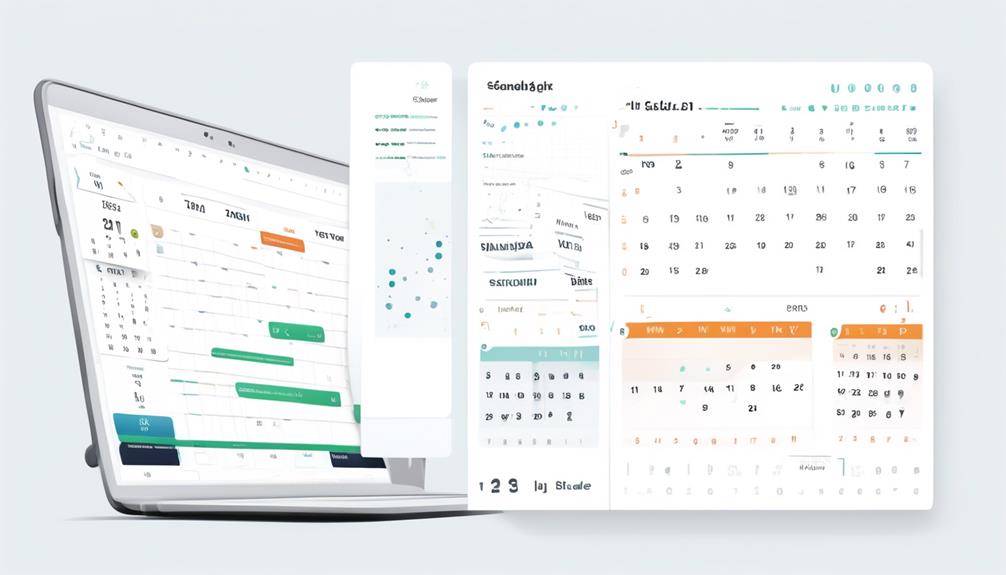
To successfully execute the SendGrid IP warm-up guide, a gradual increase in email volume, consistent sending behavior, and strategic allocation of sending volume across multiple dedicated IPs are essential for establishing a positive sender reputation and maximizing deliverability. When warming up an IP address, it's crucial to carefully plan and monitor the process to ensure a smooth transition to regular sending volumes. The number of IPs needed for the warm-up plan depends on the volume of emails sent and the desired sending reputation. Below is a table outlining the suggested number of IPs based on the daily email volume during the warm-up period:
| Daily Email Volume | Number of IPs Needed |
|---|---|
| Less than 10,000 | 1 |
| 10,000 – 100,000 | 2 |
| 100,000 – 500,000 | 3 |
| 500,000 – 1,000,000 | 4 |
| More than 1,000,000 | 5 |
Careful consideration should also be given to whether a dedicated or shared IP is more suitable for the specific email domain and sending behavior. By following the SendGrid IP warm-up guide and understanding the crucial role of IPs in email deliverability, senders can effectively enhance their sender reputation and achieve optimal inbox placement.
Frequently Asked Questions
How Do You Warm up an Email?
We warm up an email by gradually increasing our sending volume each day to establish a good reputation and improve deliverability.
Monitoring recipient engagement is crucial to avoid negative impacts on our reputation, focusing on highly engaged audiences.
It's important to follow a warmup schedule, starting with a small volume and avoiding promotional emails during this phase.
Twilio SendGrid can provide feedback and assistance, and we should migrate sending gradually when switching email service providers.
How Long Should You Warm up Emails?
We typically recommend warming up emails for 30 days, but it can extend to 60 days for some clients.
It's important to monitor recipient engagement during warmup to protect our reputation.
Starting with internal addresses, like personal Gmail accounts, is a good practice.
Following the warmup schedule outlined in the guide is crucial.
Low volume senders may be able to use shared IPs and skip warmup altogether.
Do Email Warmup Services Work?
Yes, email warmup services do work.
They gradually increase sending volume from a new IP address or domain to establish a positive reputation with ISPs.
Proper warmup processes can improve email deliverability and reduce the risk of being flagged as spam.
It's crucial to monitor recipient engagement closely during warmup to avoid negative impacts on reputation.
Factors like total email volume and previous sending habits influence customizable warmup schedules.
Choosing a reputable email service provider like Twilio SendGrid can offer valuable guidance.
What Is IP Warm up for Email?
We understand the importance of IP warm-up for email.
It's a gradual process of increasing email volume to gain ISP trust and improve deliverability.
Monitoring recipient engagement during warm-up is crucial for reputation management. ISPs are more lenient if the audience is engaged.
Following a warm-up schedule, starting with a small volume and gradually increasing it each day, is essential for successful IP warm-up.
What is the difference between an Email Warm up Schedule and Instantly Email Warm up?
An Email Warm up Schedule involves gradually increasing the sending volume and frequency of emails over time to establish sender reputation. Instantly Email Warm up, on the other hand, refers to a method of rapidly establishing trust and credibility with email providers through quick but steady email activities. Both are essential email warm up techniques.
Conclusion
In conclusion, email warm-up is essential for establishing a positive sender reputation and ensuring deliverability. By following a structured warm-up schedule and prioritizing recipient engagement, we can minimize the risk of being flagged as spam and improve our chances of reaching the inbox.
Remember, a well-planned warm-up can make all the difference in maximizing the effectiveness of your email campaigns. So, let's warm up those IP addresses and start sending with confidence!





